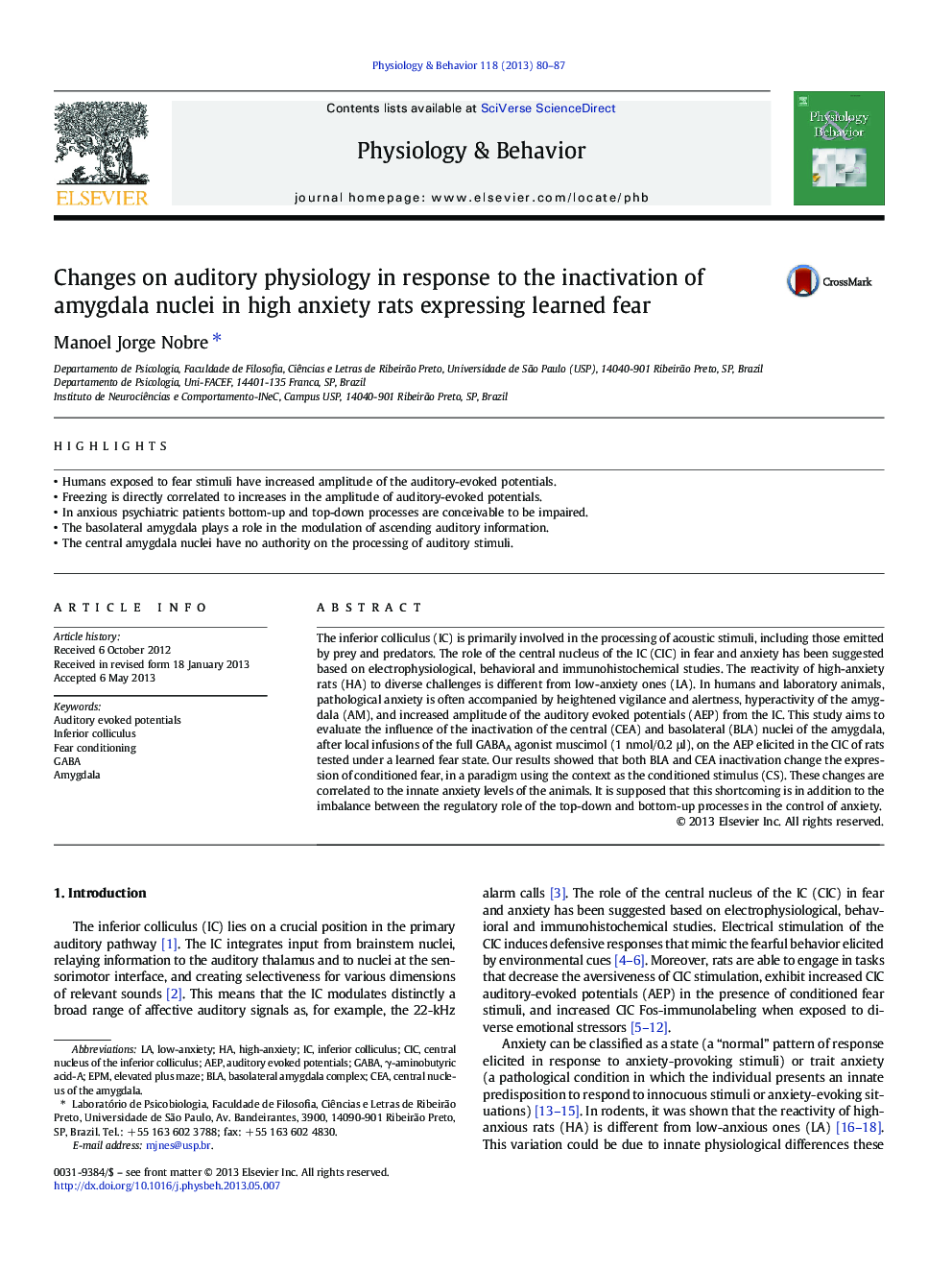| کد مقاله | کد نشریه | سال انتشار | مقاله انگلیسی | نسخه تمام متن |
|---|---|---|---|---|
| 5924697 | 1571199 | 2013 | 8 صفحه PDF | دانلود رایگان |
- Humans exposed to fear stimuli have increased amplitude of the auditory-evoked potentials.
- Freezing is directly correlated to increases in the amplitude of auditory-evoked potentials.
- In anxious psychiatric patients bottom-up and top-down processes are conceivable to be impaired.
- The basolateral amygdala plays a role in the modulation of ascending auditory information.
- The central amygdala nuclei have no authority on the processing of auditory stimuli.
The inferior colliculus (IC) is primarily involved in the processing of acoustic stimuli, including those emitted by prey and predators. The role of the central nucleus of the IC (CIC) in fear and anxiety has been suggested based on electrophysiological, behavioral and immunohistochemical studies. The reactivity of high-anxiety rats (HA) to diverse challenges is different from low-anxiety ones (LA). In humans and laboratory animals, pathological anxiety is often accompanied by heightened vigilance and alertness, hyperactivity of the amygdala (AM), and increased amplitude of the auditory evoked potentials (AEP) from the IC. This study aims to evaluate the influence of the inactivation of the central (CEA) and basolateral (BLA) nuclei of the amygdala, after local infusions of the full GABAA agonist muscimol (1 nmol/0.2 μl), on the AEP elicited in the CIC of rats tested under a learned fear state. Our results showed that both BLA and CEA inactivation change the expression of conditioned fear, in a paradigm using the context as the conditioned stimulus (CS). These changes are correlated to the innate anxiety levels of the animals. It is supposed that this shortcoming is in addition to the imbalance between the regulatory role of the top-down and bottom-up processes in the control of anxiety.
Journal: Physiology & Behavior - Volume 118, 13 June 2013, Pages 80-87
